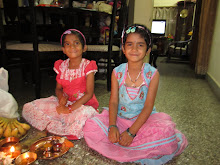Allopathy or the modern
system of medicine labels it calls it
degenerative and often fatal disorder. It says there is no known
effective treatment for this condition.
However, Ayurveda, which is perhaps the oldest system of medicine has a cure
and today many doctors and hospitals are prescribing Ayurvedic cure for Spinocerebellar
ataxia or SCA) as it is called.
SCA is called a progressive,
degenerative and genetic disorder which
is neurodegenerative in nature. Allopathy says there is no known cure and that
it can affect anybody of any age as it is caused by a gene.
Surprisingly, people are just
not aware that they carry the ataxia gene until they have children who begin to
show signs of having it. More than 60 different types of SCA have been identified.
SCA disorder leads to lack of
coordinated walk or gait, poor coordination of the limbs and even eye movement.
The disorder makes patients with SCA move their hands rather frequently and
intentionally. We can also see clumsy motion of a body as there is lack of
proper muscle movement.
Ataxia is thus a symptom, not
a disease. It is a specific term coined for poor coordination of movement and
most people suffering from ataxia walk in a uncoordinated and unsteady manner.
Ataxia is known to affect coordination
of fingers, hands, arms, speech
(dysarthria) and eye
movements (nystagmus).
Axtaxia generally results
from damage to or shrinkage of the cerebellum and it is this part of the brain that
controls coordination of movement. The disorder can be acquired or inherited as
it is hereditary.
Thus we see that Spinocerebellar
Ataxia is an illness that occurs when parts of the nervous system that control
movement are either damaged or cease to function.
Some of the symptoms include lack
of sleep or uncoordinated sleeping, tremors,
stiffness, depression and even spasticity. Almost all of these and many other
symptoms can be easily treated by medication.
Therapeutic measures combined
with regular and intensive rehabilitation regimen can help such a patient to
carry out daily chores themselves such as brushing the teeth or making and
drinking water and coffee.
Ayurvedic medicines like
Bruhat-Vat-Chintamani, Ekang-Veer-Ras, Tapyadi-Loh, Kaishor-Guggulu,
Vat-Gajankush-Ras and Maha-Vat-Vidhvans-Ras are generally used for gait
instability, tremors and even loss of movement.
A variety of herbal medicines
like Ashwagandha (Withania somnifera), Bala (Sida cordifolia), Haridra (Curcuma
longa), Naagbala (Grewia hirsuta), Shatavari (Asparagus racemosus), Yashtimadhuk
(Glycyrrhiza glabra), and Mandukparni (Centella asiatica) and these are known
to improve the blood supply to brain cells and help in regeneration of the cells.
Besides, medicines such as Brahmi (Bacopa monnieri), Shankhpushpi (Convolvulus pluricaulis) and Vacha (Acorus calamus) are used to improve memory and intellect. Jatamansi (Nardostachys jatamansi), Jayphal (Myristica fragrans), Khurasani ova (Hyoscyamusniger
Besides, medicines such as Brahmi (Bacopa monnieri), Shankhpushpi (Convolvulus pluricaulis) and Vacha (Acorus calamus) are used to improve memory and intellect. Jatamansi (Nardostachys jatamansi), Jayphal (Myristica fragrans), Khurasani ova (Hyoscyamus
Panchakarma treatment is
prescribed for regaining body strength. Regular massage and medication helps
alleviate many of the symptoms.
Ayurveda and the Chinese system of medicine has a cure for this disorder. The Chinese system involves replanting stem cells and this research has been successfully carried out in St. Micheal’s Hospital,Shangai , China
Ayurveda and the Chinese system of medicine has a cure for this disorder. The Chinese system involves replanting stem cells and this research has been successfully carried out in St. Micheal’s Hospital,
In India
Ayurveda can treat both
hereditary and acquired ataxia. However, a majority of the ataxias are
hereditary and they are classified by chromosomal location and pattern of
inheritance.The more common inherited ataxias are Friedreich’s
ataxia and Machado-Joseph.
Ataxia can also be acquired from
vitamin deficiency, tumors, stroke, multiple sclerosis, alcoholism, peripheral
neuropathy and metabolic disorders.
Allopathy says there is no
cure for the hereditary ataxias. However, ataxia caused by a metabolic disorder
or vitamin deficiency can be treated with medications and controlled diet. Regular
physical therapy can strengthen muscles.
Ayurveda terms ataxias as Pandu
roga. It says the reason for the disorder is due to deficiency in liver function which
depletes the Dhatu in the blood which in turn cause all these symptoms. Ayurvedic
treatment starts with avoiding fried
food, artificial food, green/red chillies, tomatoe, lemon, tamarind, potato and
curd.
The treatment options for
improving the balance in degenerative cerebellar ataxias are very few.
Ayurvedic texts have described diverse treatment regimens for this disease.
Ayurvedic
treatment starts with treatment of Shirobasti (therapeutic retention of
medicament over the scalp) in male patients and Shirodhara (pouring of a steady
stream of medicament on the forehead) in female patients with Dhanvantaram
taila (medicated oil).
This
is followed by by Abhyanga or methodical
massage with Dhanvantaram taila and Bhashpa sweda, which is also known as steam
bath.
Apart
from these two methods, Ayurveda also prescribes Abhyantara aushadha or oral
medicine of Maharasnadi kashayam, Dhanvantaram capsules and Ashwagandha.
Studies
have shown that this treatment did not have any side effect and there was
improvement in walking and other motor movement.
In
Japan
A
word of caution and warning though. No treatment should be undertaken on its
own. Consult your family doctor first and then turn to an expert Ayurvedic expert.
Even messaging correctly should be learnt from an expert.
